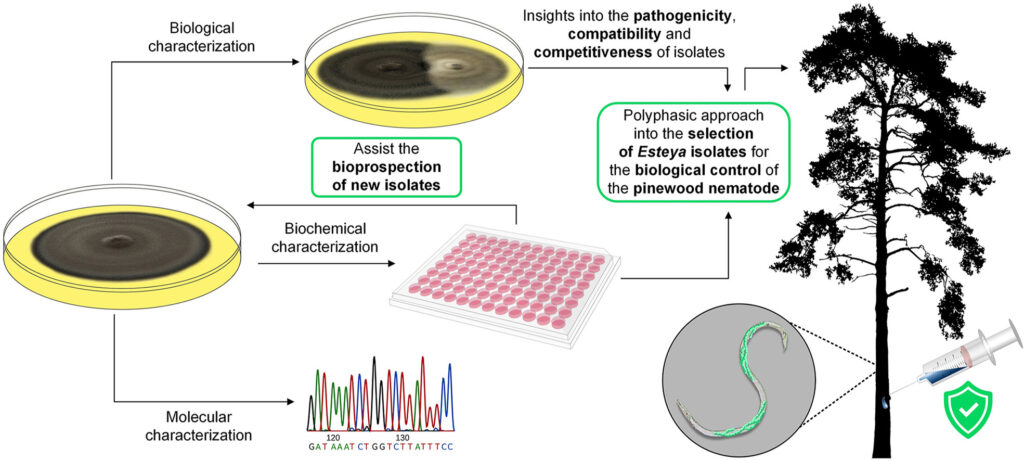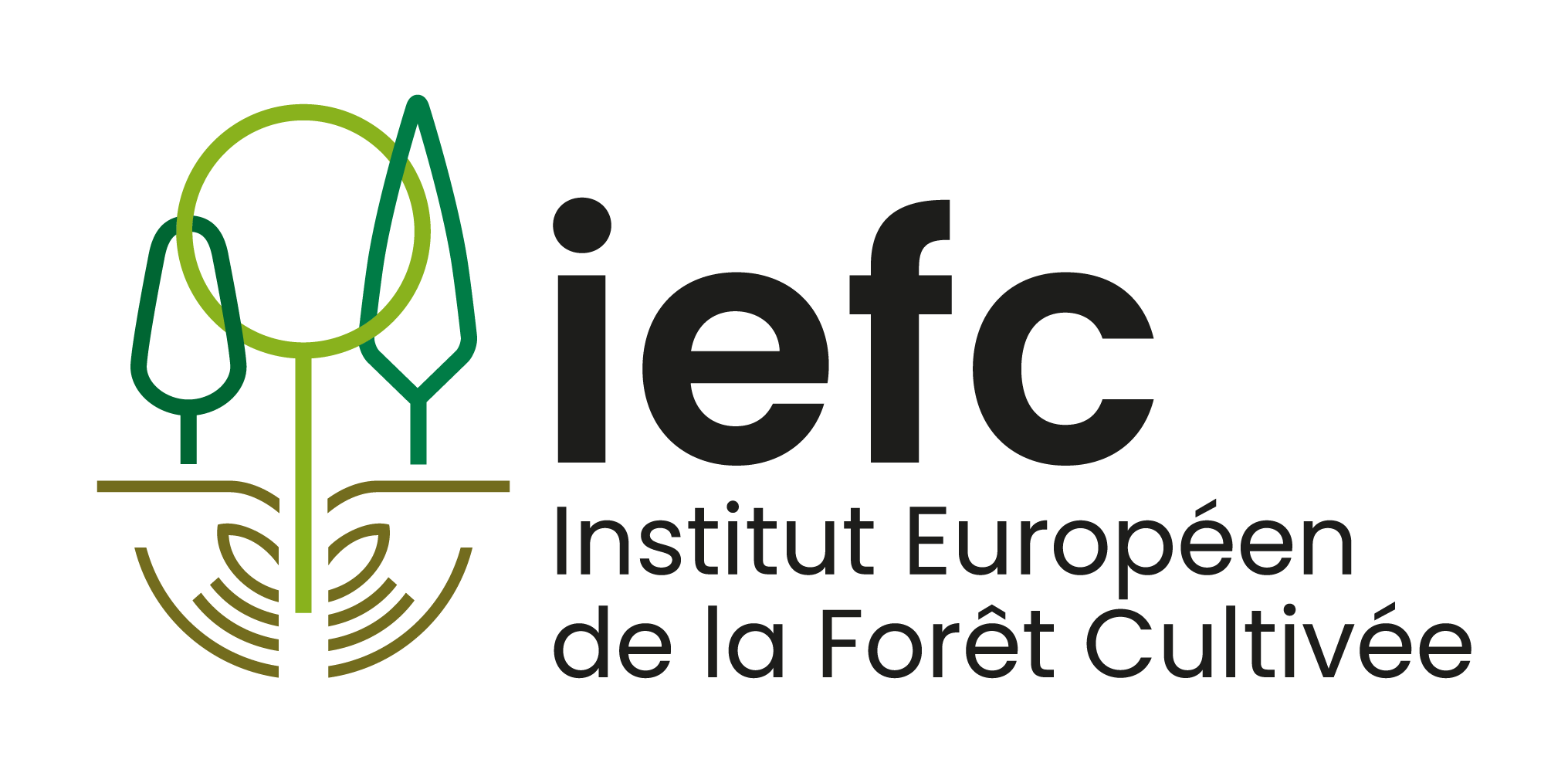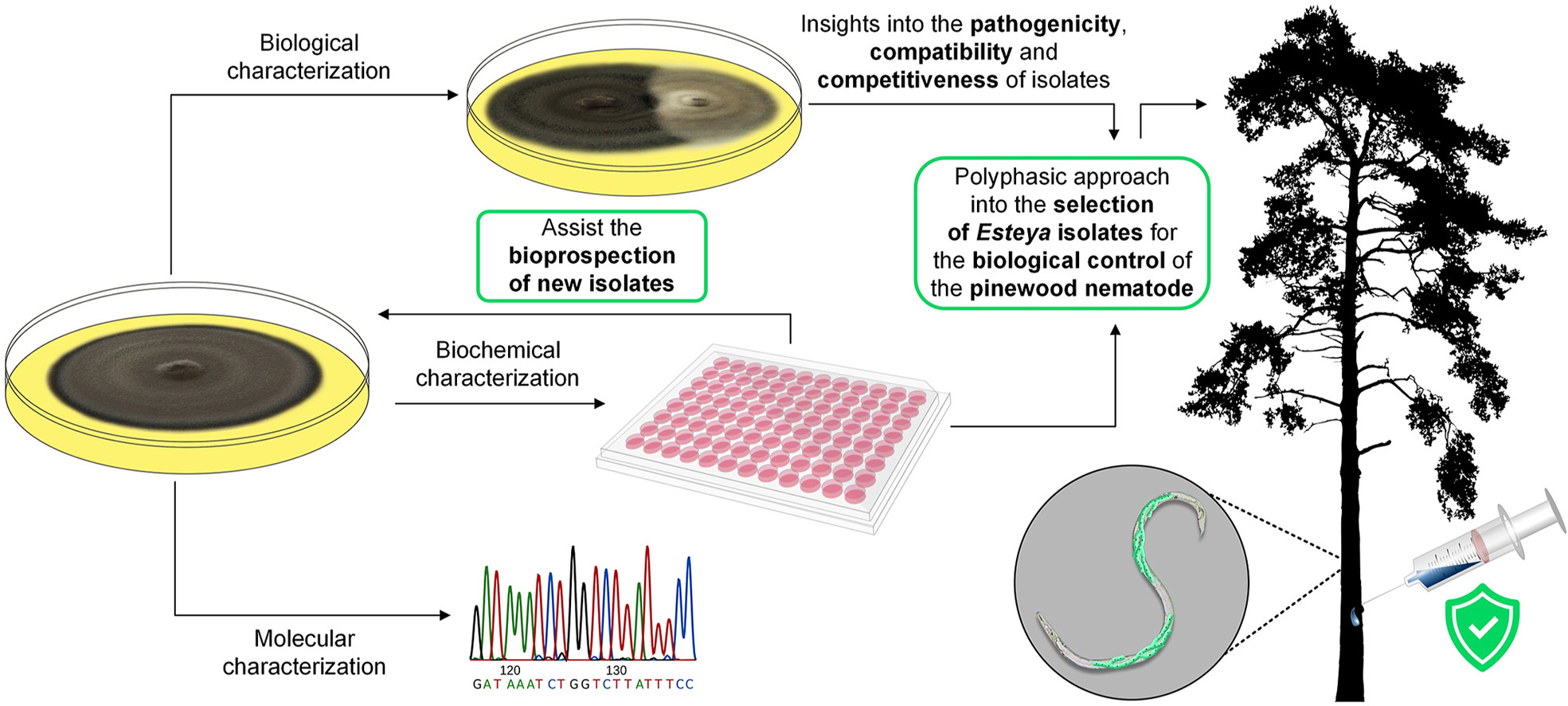
Pine wilt disease, caused by the pinewood nematode, Bursaphelenchus xylophilus, is a major phytosanitary concern to pine forests worldwide. Managing pine wilt disease involves a complex logistical undertaking, with limited effectiveness and significant ecological repercussions. An increasing demand for biosolutions has sparked an interest in microbial antagonists capable of controlling the nematode. Esteya spp. are promising fungal biocontrol agents of the pinewood nematode. Here, we carry out an integrative characterization of Esteya vermicola and Esteya floridanum isolates, through biological, biochemical, and molecular methods, and provide insights into the selection of these isolates for the biological control of the pinewood nematode. Dual culture assays revealed that Esteya spp. can compete with ophiostomatoid fungi (Leptographium terebrantis and Ophiostoma ips) occurring in the pathosystem of pine wilt disease, an often-neglected ecological perspective that could hinder their success as biocontrol agents. Moreover, E. vermicola can metabolize more carbon sources than E. floridanum, which can have implications on their successful establishment in pine trees. Our experimental approach further shows that both Esteya spp. are equally competent in suppressing the pinewood nematode in vitro. Overall, our results suggest that a prophylactic application of Esteya in pine trees may be preferable for optimal bioprotective effects against the pinewood nematode and fungal pathogens.
The link to the paper: https://doi.org/10.1016/j.funbio.2024.10.001
David Pires, PhD Candidate

